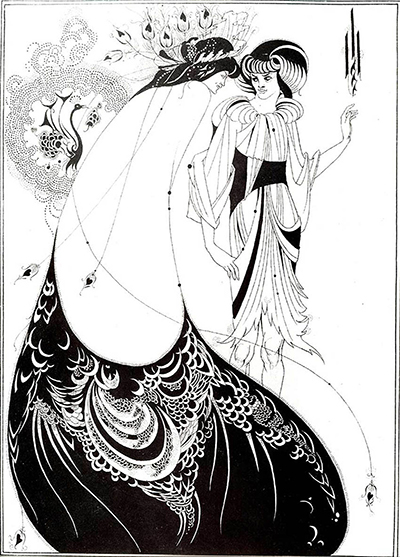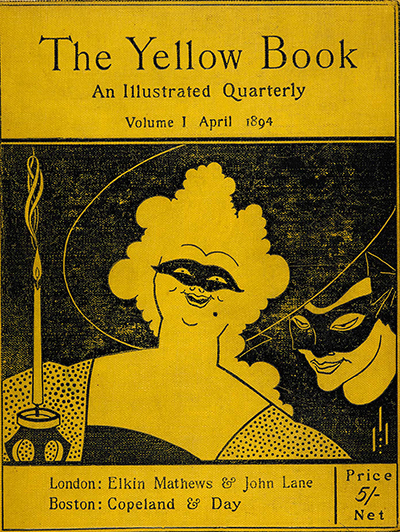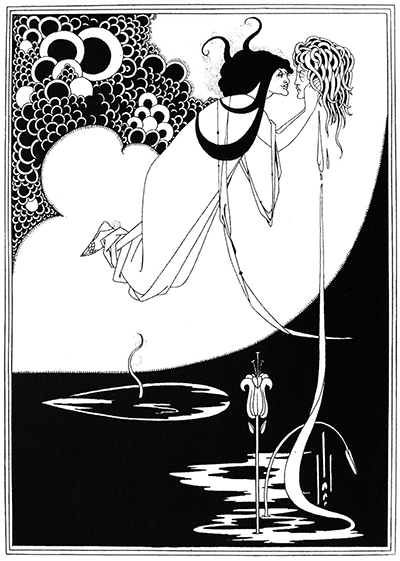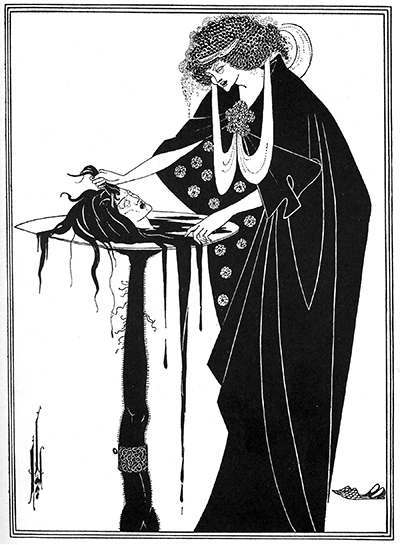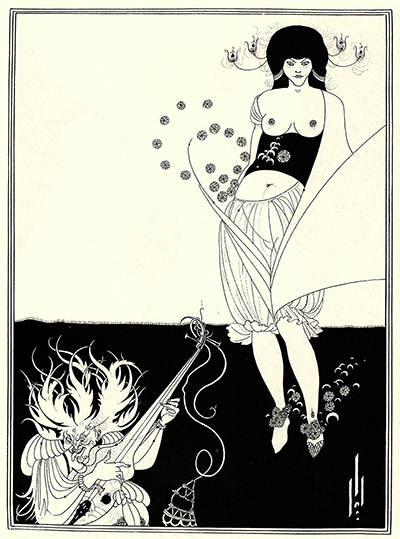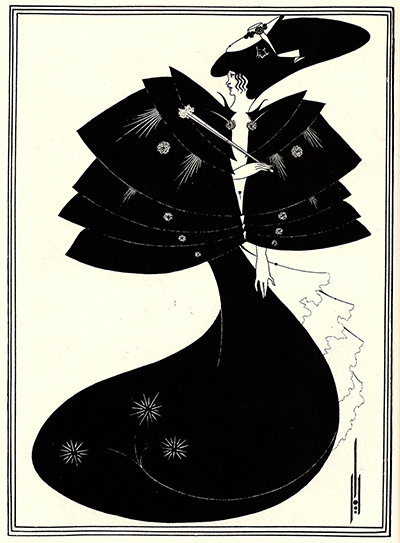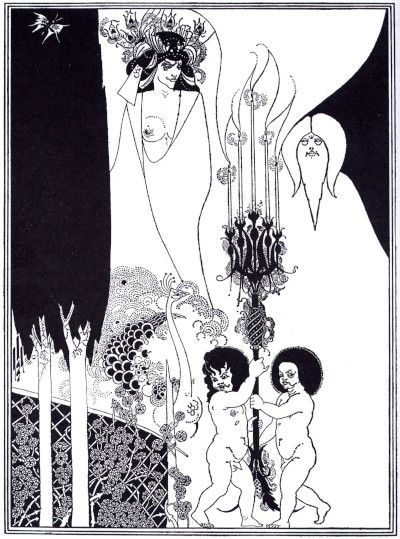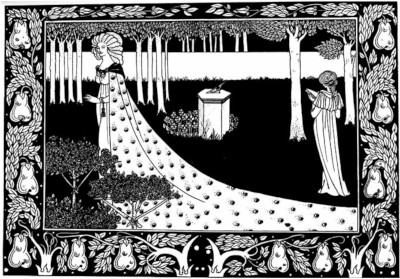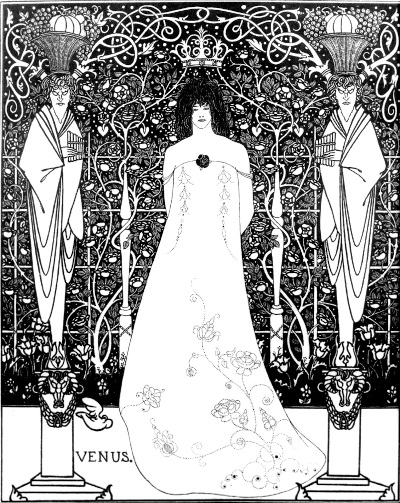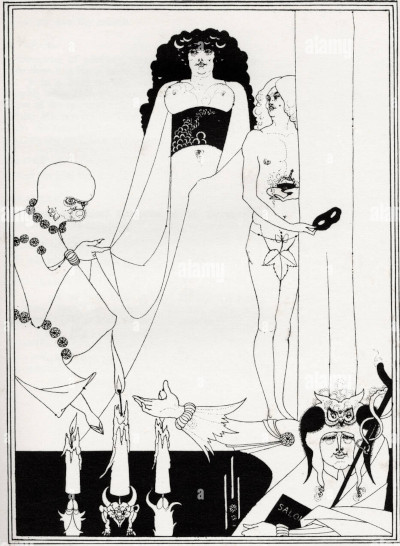Aubrey Beardsley's illustrations made a memorable contribution to the late 19th century art scene. His style was unique, a fusion of influences from France, Japan and also his native UK.
It was his use of black and white lines, combined with inspiration from literature that summarises the approach taken by Beardsley. Despite his short life time, which restricted his professional career to only around six years, he managed to build a strong reputation and instantly recognisable artistic style that would influence many visual artists in later generations. His legacy was felt particularly strongly in the UK, such as in the field of graphic design. His time living in Paris allowed him to draw on ideas found in the city at the time, such as with the poster designs of artists like Toulouse-Lautrec. He spent time in the company of other artists in London too, and this brought other methods to his attention as well. The majority of illustrators have had to balance commercial work with creative freedom, particularly early in their careers, and Beardsley was no different in that regard. He somehow managed to achieve some level of independence from an early point, which was very much to the benefit of his overall oeuvre.
Many of the artist's illustrations were commissioned series for various upcoming publications. Often they would then be placed around historic texts which were revamped in new releases. The likes of Botticelli and Blake had already worked in this manner in previous centuries, and so this was nothing new. The difference with Beardsley was in how he infused these classical texts with a contemporary approach, and had the skill to merge the two together perfectly. Two of the most memorable titles were The Yellow Book and also Salome, both of which Beardsley produced a number of drawings for. On occasion the artist would be asked to tweak certain elements, such as where he had been overly sexual within elements of his content, but he was afforded a relatively high level of independence once his patrons or colleagues realised the supreme artistry that he possessed. One of the reasons for his consistency would have been the short length of his career, and who knows what direction he might have followed, had he been able to carry on for several more decades.
Beardsley's approach was to reject and criticise Victorian attitudes to sexuality, gender and politics which differed greatily from his own. He was a true avant-garde artist who immediately set about finding channels in which his own opinions could be expressed openly. This would immediately set him on a collision course with the more conservatively-minded critics around at that time, but he did receive a strong backing from a number of other artists. He also played an important role in merging the techniques of art and advertising, having learnt so much from his time in Paris. British audiences now realised that the two could work together in harmony, and so he would start to add lettering to his illustrations in order to advertise various products. Beardsley designed the front cover for The Yellow Book and adorned the imagery with the necessary details about the publication. The style of his work shocked and angered some, which immediately set this publication on a route towards controversy, even before anyone had even read any of its content. This became one of his most memorable projects, though, along with a number of drawings that he produced for an English-language version of Salome.
The artist's style was certainly a fusion of all manner of different ideas and influences. His time in France brought poster art to his attention and Toulouse-Lautrec was clearly someone who impacted his fusion of art with advertising when Beardsley returned to the UK. London was behind in that regard, meaning Beardsley's own take was fresh and interesting, particularly to the younger and less conservative audiences. He was also strongly connected to the Aesthetic movement, which was prominent within the UK and that group promoted the idea of "art for art's sake", where practical, moral or narrative considerations were not mandatory. Lord Leighton and James Whistler, who were more involved with that movement would also join him on The Yellow Book, though Beardsley seemed more in tune with the contemporary ideas and techniques found in the Art Nouveau movement. The late 19th century art scene in both the UK and France was full to the brim with new ideas, and also interesting re-hashes of older styles, and most of these groups overlapped with each other in one way or another. Their members would also regularly socialise and express ideas in a positive, constructive manner where innovation was encouraged.



